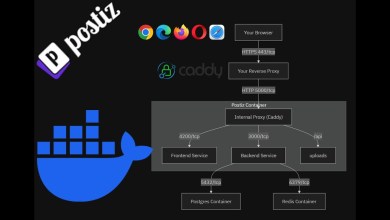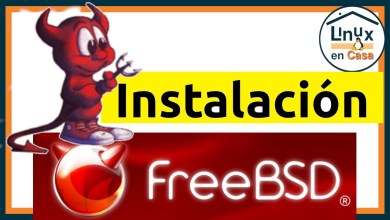Dual Boot Fedora & Windows 11 on One PC: Easy Guide
Switching to Linux can be a long migration, so sometimes it’s great to be able to sample the best of both worlds on a single PC. Or, perhaps you’re even a fan of both operating systems! In this video, Jay will walk you through the process of dual-booting Fedora Workstation and Windows 11 every step of the way. Just make sure you back up first just in case!
Check out the Fedora distribution here ➜
*LEARN LINUX TV – YOUR HOME FOR LINUX-RELATED FUN AND LEARNING!*
*🎓 BRAND NEW UDEMY COURSES AVAILABLE!*
Check out my new courses on Udemy and learn something new!
• Getting Started with Ansible ➜
• LPI Linux Essentials Complete Workshop ➜
*🐧 SUPPORT LINUX LEARNING!*
• Grab some Linux swag ➜
• Become a Channel Member ➜
• Become a Patron ➜
• 5% discount on LPI exam vouchers ➜
• Check out my latest book ➜
• Grab an awesome Pi-powered KVM ➜
• Jay’s Gear – Server, Computer and Video Production Stuff ➜
_Note: Royalties and/or commission is earned from each of the above links_
*🎓 FULL LINUX COURSES FROM LEARN LINUX TV*
• Linux Crash Course ➜
• Learn tmux ➜
• Learn vim ➜
• Bash Scripting Series ➜
• Proxmox VE ➜
• Getting Started with Ansible (Udemy) ➜
• LPI Linux Essentials Workshop (Udemy) ➜
*🕚 Time Codes*
00:00 – Intro
01:04 – Brand new Linux courses available!
02:34 – Checking Windows 11 to ensure it’s up to date
03:29 – Using the Fedora Image Writer to create bootable media
06:14 – Booting into the Fedora live environment
09:10 – Testing compatibility with Fedora before installing
12:30 – Booting into Windows
13:31 – Booting into Fedora
15:18 – Updating Fedora
*📘 FAQ*
• What is a “Distribution” of Linux? ➜
• What is a “Desktop Environment”? ➜
• Which Server Distro should I use? ➜
• How do I create USB install media? ➜
• How do I create multi-boot USB media? ➜
• How do I connect to a server via SSH? ➜
• How do I exit vim? ➜
• How do I use APT? ➜
• How do I use DNF? ➜
• How do I use pacman? ➜
• How do I use zypper? ➜
• What is a “Flatpak”? ➜
• What is a “Snap” package? ➜
• How do I install Arch Linux? ➜
• How do I configure SSH on my server?
• How do I install updates? ➜
• How do I secure my Linux Server? ➜
• How do I use LVM? ➜
• How do I use Git? ➜
• When will the “Year of the Linux Desktop” Happen? ➜
• Do you have a sense of humor? ➜
*🌐 LEARN LINUX TV ON THE WEB*
• Main site ➜
• Community ➜
• Official Github Account ➜
• Enterprise Linux Security Podcast ➜
• The Homelab Show Podcast ➜
• Jay on Udemy ➜
• Jay on Twitter ➜
• Content Ethics ➜
• Request Assistance ➜
*⚠️ DISCLAIMER*
Learn Linux TV provides technical content that will hopefully be helpful to you and teach you something new. However, this content is provided without any warranty (expressed or implied). Learn Linux TV is not responsible for any damages that may arise from any use of this content. Always make sure you have written permission before working with any infrastructure and that you are compliant with all company rules, change control procedures, and local laws.
#CloudComputing #DevOps #Linux
[ad_2]
source



Awesome! Thanks for the video Jay.
rEFInd! Mentioned that often earlier. Use it since years on all my machines. Boot to firmware, from usb, kernels directly from root. All i wished.
Handy that Fedora comes with a proper partition tool that can shrink partitions. Alternatively booting into a live image environment and using gparted, that's what did the trick for me. Actually more than once, because I initially didn't reserve much space for linux as I wasn't sure I'd be daily driving it, but now the windows partition is just vestigial.
I dual booted Vanilla Linux and Windows 11, but I had two drives in my computer so I put Windows on one drive and Linux on the other.
I disconnected the power lead and SATA data cable from one of the drives and installed Windows.
I then removed the Windows drive and reconnected the cables to my second hard drive and then installed Vanilla OS on it.
Once I was finished I turned off the computer and reinstalled the removed Windows drive.
By default it will boot into Windows but I can change the boot order, so Linux is the Primary OS, in the BIOS. If I want to boot the Secondary OS then I just hit F12 whilst booting and select the other OS I want to boot.
To be honest the look of Fedora looks very similar to Vanilla OS, which I am currently using.
Heads up, as this has tripped me up many times, but do NOT test the media when you go to boot from the Fedora USB. If you create the drive in Windows it will fail the checksum test at the same point every time. This is because the checksum assumes that the disk is identical to the original ISO image. If you create it in Windows it will not be the same as Windows creates a hidden directory in every compatible volume that gets mounted. That directory is called 'System Volume Information' and it will alter the final checksum of the device.
I have my pc set up to be able to boot into 4 OS’s with 4 separate SSD’s. One with Ubuntu for my daily driver, one with Kali to study and practice penetration testing, one for my Windows gaming and legacy software, and one for my son’s gaming and school work. This way, if something gets messed up or corrupt on one SSD it doesn’t disrupt the others, especially anything my son does…
GRUB gives me a menu…
An important part is missing from this otherwise excellent lecture. How to reformat the Windows partition and add it as extra storage to Fedora, later. Isn't this the ultimate goal?
Great video! I didn't know we could shrink the Windows partition directly from the Fedora installer.
Can you please make a video tutorial about how to install Gentoo Linux via USB ? Thanks in advance. Really good video by the way )
Great video! Please would you consider covering different gui based boot loaders?
Could you do one for Debian and WIndows11 please? I dont like Fedora, I like the grand daddy Debian.
Great video Jay, however there's a couple of things you really should also do.
Disable hibernation in Windows, it can result in data loss if you reboot into the other operating system whilst the first is hibernated. The Arch wiki has a good article about this.
Windows only gives you a 100MB EFI partition, this suffices for a single boot windows system, but most linux systems recommend a minimum of around 250MB. This is easy to address with Fedora and most other live USBs, as you can fire up gparted and move the partitions around on the disk after resizing them to accommodate this increased EFI partition size, however you can't resize a VFAT EFI file system, so you'll need to backup the files, resize the partition, reformat it (keeping the same volume ID, very important otherwise Windows won't boot) and copy the files back in to the partition.
Avoid creating multiple EFI partitions as some other comments suggest, as this isn't a recommended configuration.
There a good detailed video that covers all this on this on the SysGuides YouTube channel, entitled, 'How to PROPERLY Dual-boot Windows 11 and Ubuntu (2024)'.
Certainly easy enough to setup, but too risky and too easy to screw up grub and corrupt your bootloader. Better to have separate disks, each with its own OS.
Been with Fedora since 2003 / '04….its the Beez Kneez!….LOL!
Will this method work for Linux Mint?
I use two SSD's. One for Windows and one for LInux. I use the Grub boot menu to pick which SSD (Windows 11 or Linux) to boot.
been doing it for years – have to run Windows stuff from time to time (yes, I also have VMs)
I stay away from dual-boot … NOT a good idea. An as someone else mentioned, I'd go with Debian!
My recommendation is to make sure you disable Fast Startup in Windows before you start dual booting linux. This will force Windows to close all files before shutting down. This will help prevent corrupting the Windows partition when you are using Linux.
Rather Debian, thx 😛 Oh and don't forget to give it it's own EFI partition so Win can't mess up your boot ✊
Thats my setup, exactly! 😀👍
sidenote: I hate the "dual boot" wording. Its just not what its means. You are not booting 2 OS at the same time… God I wish it was really in development, a shell, a hypervisor that is sole purpose to run desktop environments share ram, cpu, gpu, storage and instantly "alt tab" between them without any overhead that would be amazing.
As much as I have wanted, I have yet to find a compelling reason to dual boot windows/linux. WSL2 seemed to be the right solution, and worked well, especially after the network driver issue was corrected which allowed nmap and tcpdump to function properly.